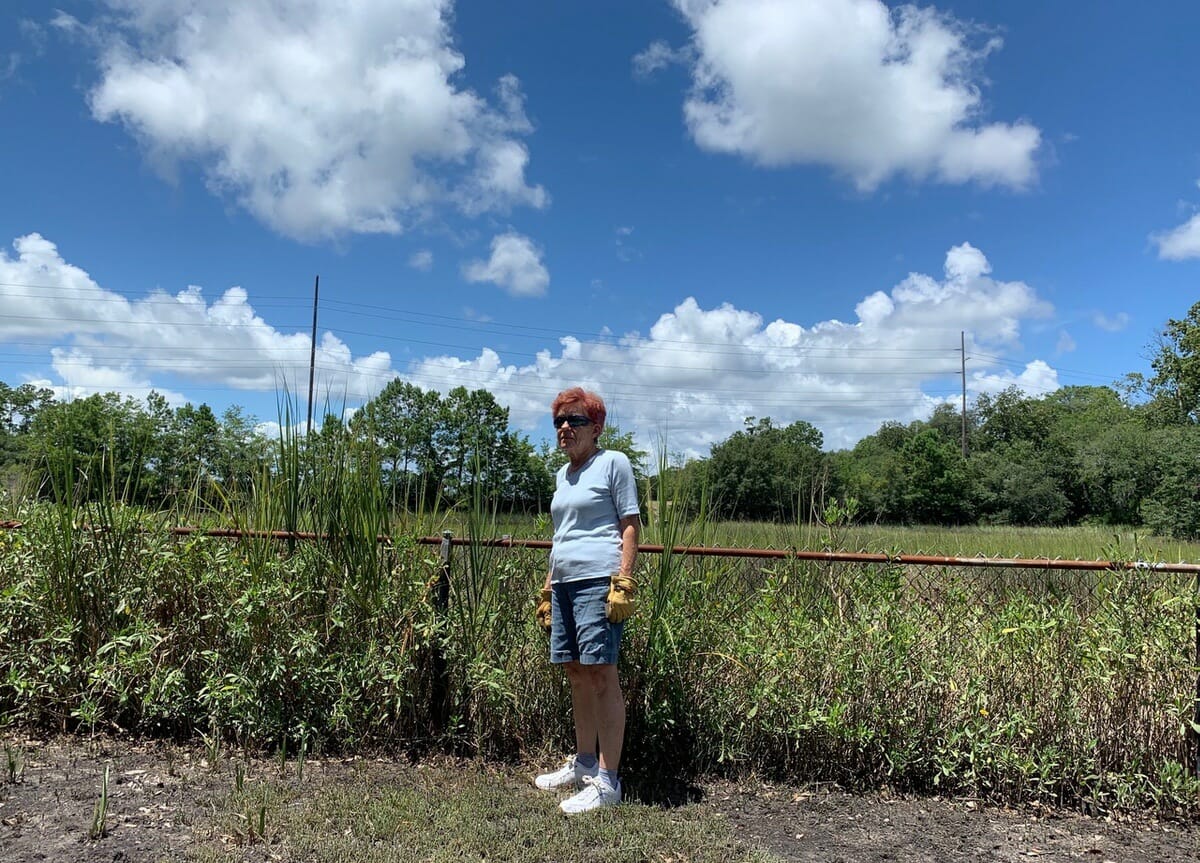Mossy Oaks residents excited drainage project has begun, hopeful work will solve flooding issues
By Mindy Lucas
Ask Mossy Oaks resident Chris Nietert how she feels about the construction trucks and the surveyors and the digging equipment spotted in her neighborhood over the last week or so, and you’ll get an interesting answer.
“Jubilant,” said Nietert recently from her home on West Royal Oaks Drive.
Nietert’s neighbor, Judy Teas, had a similar response.
“I’m as excited as can be,” she said.
Like many in the flood-prone neighborhood east of Battery Creek, Nietert and Teas have been waiting for this day to arrive.
Work recently kicked off on phase one of the Mossy Oaks drainage project – a massive, multimillion dollar, multijurisdictional effort designed to alleviate some of the area’s decades old flooding issues.
Residents have endured flooded homes, yards and garages, have sustained property damage and have experienced countless headaches and frustration over what many, including experts on a task force formed to solve the problem, have said is due in large part to an aging or, in some cases, misaligned drainage system in dire need of repairs and maintenance.
And over the years it has gotten worse.
Rising sea levels, king tides and major rain events, not to mention hurricanes, have exacerbated the problem.
Other issues adding to the mix have included homes built on slabs, and ditches found overgrown with vegetation or filled with debris.
In 2019, city work crews cleared out and graded the Jane Way canal which had been used for years as a dumping ground. Two dumpsters full of trash, yard debris, construction waste and old tires were hauled away.
Living on the front lines
In Nietert and Teas’ area, known as Basin One, water trying to find its way in or out of a drainage pipe beneath the Spanish Moss Trail, often winds up in their backyards.
“Whatever is going to come down that way has got to get out Basin One – out of that hole right there,” Nietert said recently from her back porch as she pointed to the pipe connecting a small pond behind her house to Battery Creek.
Over the years, Nietert said she has come home from work after a downpour or king tide to find water swirling in the back half of her yard.
Teas, who lives several doors down from Nietert, has the same issues with water in her backyard as many on that side of the street has, she said.
Like a bathtub, the area is high on two sides and low in the middle, which causes water to become trapped in areas like West Royal Oaks Drive, explained Neal Pugliese, chairman of the Mossy Oaks Drainage Task Force.
“So what’s happening in their neck of the woods is the elevation is being adjusted correctly,” he said.
The work is based on a massive engineering study conducted from 2017 to 2018 that looked at some 888 acres stretching from Beaufort’s city limits down to Port Royal, Pugliese said.
A study of that size for the area had never been done before, he said, but it soon helped to determine where the drainage problems and bottlenecks were.
As part of the effort to correct the elevation, drainage pipes will be installed along West Royal Oaks Drive, First Boulevard, Broad Street and Battery Creek Road. Additional work will be done along the Jane Way canal and Spanish Moss Trail, Pugliese said.
In addition, flap gates, which can be closed in the event of an approaching storm or hurricane, will be installed along the trail. The gates can help prevent water from surging into the neighborhood during such events.
While no area in the Lowcountry is safe from hurricanes that occur at high tide, Pugliese said, the Mossy Oaks improvements will significantly improve drainage for average or above average storm events.
Mossy Oaks is just one of nine “challenged areas” the task force has identified and prioritized on its lists of public works projects and expects the total for those projects to run between $13 million and $15 million. Mossy Oaks alone is estimated at $6 million.
Solving the area’s flooding issues has taken an unprecedented effort, Pugliese said.
With so many jurisdictions, agencies and entities involved – from federal, state and local governments to the Army Corps of Engineers, several state agencies and area utility companies – Pugliese said it could have been easy for any one group to say “not my problem.”
“But they didn’t do that. They had the courage to stand up and say, ‘You know, we’re going to solve this repetitive flooding problem,’” he said.
So far, the city has received a total of $7.5 million for all the projects.
Relief in sight
The first phase in Mossy Oaks will be broken down into two areas – Basin 1, or the north side of the neighborhood, which is expected to require the most work, and Basin 2, or the south side.
Money to pay for the project will come from bond proceeds, grants totaling $1.5 million and a $373,000 contribution from Beaufort County and Beaufort-Jasper Water & Sewer Authority.
The work is expected to last about six months and detours will more than likely impact traffic in the area, Pugliese said.
In the meantime, residents’ concerns and frustrations have not been lost on Pugliese who regularly emails updates on the project to task force members, community and civic leaders as well as “neighborhood representatives” such as Nietert.
“I have seen up close and in person the damage this has done to the residents and their homes,” he said, adding that he has made it his personal mission to see the project through. “We’re going to get this thing done.”
It is something that gives residents like Nietert and Teas hope. Along with others in the Mossy Oaks neighborhood, they have endured their share of flooding.
When Hurricane Matthew hit in 2016, Nietert had water up to the door of her home. Teas was hit even worse with 8 inches of water in her home. Her neighbor, she said, got even more.
While both know the construction project is not meant to protect areas from extreme events such as a direct hit from a major hurricane, ultimately they hold out hope that the effort will mean less water in their yards and hopefully no more water in their homes.
“It’s going to take a while before we know,” said Teas, standing in her backyard looking out across the pond to the drainage pipe and the trail. “We’ll see. Hopefully, it will work.”
Above: Judy Teas stands at the edge of her backyard in the Mossy Oaks neighborhood in Beaufort. Behind her, a small pond-like area connects to Battery Creek via a drain pipe beneath the Spanish Moss Trail. Teas and her neighbors regularly get water in their yards after a King Tide, heavy downpour or other rain event. Photo by Mindy Lucas









